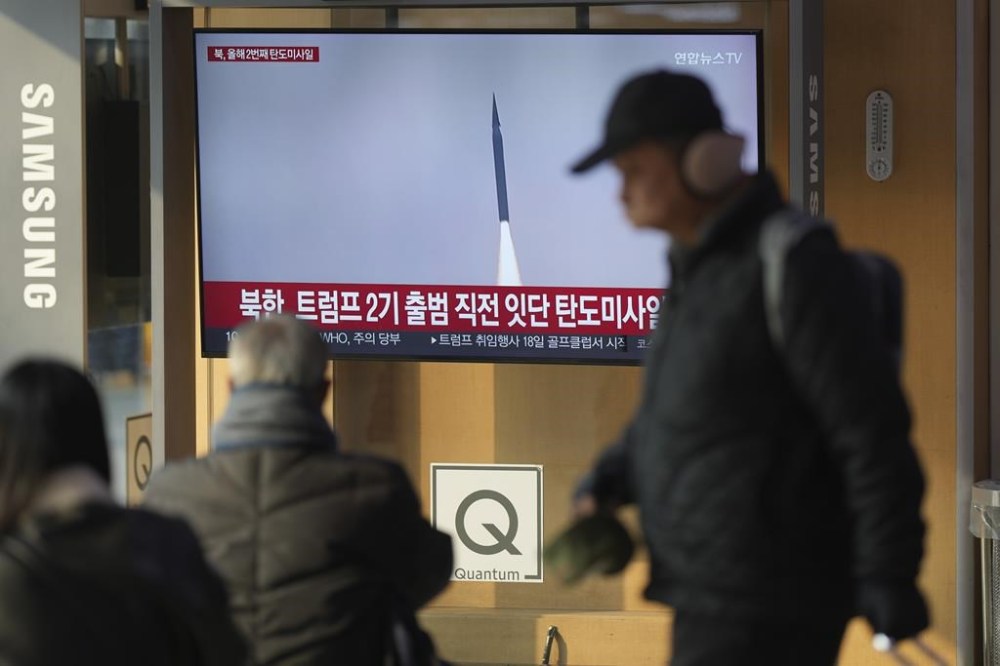North Korea launches missiles toward eastern waters in 2nd launch of year, South says
Advertisement
Read this article for free:
or
Already have an account? Log in here »
To continue reading, please subscribe:
Monthly Digital Subscription
$0 for the first 4 weeks*
- Enjoy unlimited reading on winnipegfreepress.com
- Read the E-Edition, our digital replica newspaper
- Access News Break, our award-winning app
- Play interactive puzzles
*No charge for 4 weeks then price increases to the regular rate of $19.00 plus GST every four weeks. Offer available to new and qualified returning subscribers only. Cancel any time.
Monthly Digital Subscription
$4.75/week*
- Enjoy unlimited reading on winnipegfreepress.com
- Read the E-Edition, our digital replica newspaper
- Access News Break, our award-winning app
- Play interactive puzzles
*Billed as $19 plus GST every four weeks. Cancel any time.
To continue reading, please subscribe:
Add Free Press access to your Brandon Sun subscription for only an additional
$1 for the first 4 weeks*
*Your next subscription payment will increase by $1.00 and you will be charged $16.99 plus GST for four weeks. After four weeks, your payment will increase to $23.99 plus GST every four weeks.
Read unlimited articles for free today:
or
Already have an account? Log in here »
Hey there, time traveller!
This article was published 13/01/2025 (329 days ago), so information in it may no longer be current.
SEOUL, South Korea (AP) — North Korea on Tuesday test-fired multiple missiles toward its eastern waters, South Korea’s military said, as it continued its weapons demonstrations ahead of Donald Trump’s return to the White House.
South Korea’s Joint Chiefs of Staff said the short-range ballistic missiles were fired from a northern inland area and flew about 250 kilometers (155 miles) before landing in waters between the Korean Peninsula and Japan.
The joint chiefs said the South Korean military has strengthened surveillance while sharing the launch information with the U.S. and Japanese militaries. It said it strongly condemns the test, describing it as a “clear provocation” that poses a serious threat to the region’s peace and stability.

It was North Korea’s second launch event of 2025, following a ballistic launch last week.
North Korea said the Jan. 6 test was a new hypersonic intermediate-range missile designed to strike remote targets in the Pacific as leader Kim Jong Un vowed to further expand his collection of nuclear-capable weapons to counter rival nations.
North Korea is coming off a torrid year in weapons testing. The systems it demonstrated in 2024 included solid-fuel intercontinental ballistic missiles designed to strike the U.S. mainland and various shorter-range missiles designed to overwhelm missile defenses in South Korea. There concerns that its military capabilities could advance further through technology transfers from Russia, as the two countries align over the war in Ukraine.
At a year-end political conference, Kim vowed to implement the “toughest” anti-U.S. policy and criticized the Biden administration’s efforts to strengthen security cooperation with Seoul and Tokyo, which he described as a “nuclear military bloc for aggression.”
North Korean state media did not specify Kim’s policy plans or mention any specific comments about Trump. During his first term as president, Trump met Kim three times for talks on the North’s nuclear program.

Even if Trump returns to the White House, a quick resumption of diplomacy with North Korea could be unlikely. Kim’s strengthened position — built on his expanded nuclear arsenal, deepening alliance with Russia and the weakening enforcement of U.S. international sanctions — presents new challenges to resolving the nuclear standoff, experts say.

